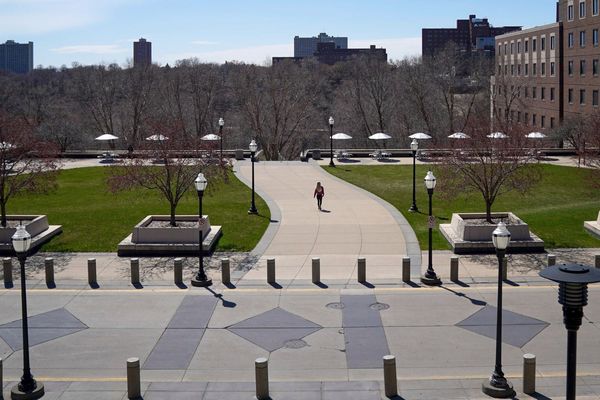For years, Al Larson has been celebrated as "the Bluebird Man," an Idaho conservation enthusiast who spent decades working to preserve the state bird. But on March 26, Larson's family and friends gathered to celebrate him for a different reason — his 100th birthday.
The centenarian milestone comes roughly 50 years after Larson began the efforts that would earn him his avian-inspired nickname. Around the time he retired, Larson began building bluebird nest boxes and collecting decades of data on the birds. Since then, he's been the subject of an Emmy-nominated documentary and had a legacy fund named after him at the local chapter of the Audubon Society.
"Helping the bluebirds was sort of a side project," Larson told the Idaho Statesman. "(Then it) turned into a hobby, and I didn't worry about the time I spent out there."
Idaho 'Bluebird Man' banded thousands of birds
In the early 1970s, Larson noticed bluebirds nesting in an old woodpecker hole on his ranch. Larson said he had read an article in National Geographic about population declines among different bluebird species, including Idaho's state bird, the mountain bluebird.
Birders on the East Coast were creating "bluebird trails" — routes of nest boxes meant to provide safety for the birds — and Larson decided to do the same at his ranch.
Soon the tiny birds became a main focus in Larson's life. Larson's grandson Jimmy Hallyburton, a Boise City Council member and founder of the Boise Bicycle Project, told the Statesman that Larson's passion for the birds has helped give him purpose.
"He retired and started a whole new life all over again with the bluebirds," Hallyburton said by phone. "It's pretty incredible to think what he's been able to do in the second half of his life."
In 1973, Larson helped co-found the Boise-based Golden Eagle Audubon Society. On a field trip with the club in the Owyhees, Larson spotted a new site for his nest boxes.
"I noticed a big flock of birds on a hillside, (and they) turned out to be mountain bluebirds," he told the Statesman. "I thought, 'This would be a good place to put some nest boxes up.'"
He put 25 boxes on a trail in the Owyhees and created another trail near Prairie. In all, Larson made and tended roughly 350 nest boxes for decades, visiting every few days in the summer to check on the birds and take notes. He got a permit to band birds, attaching small markers to their legs to help fellow birders identify the animals. Through the years, Larson banded tens of thousands of birds.
"As a young man, I used to just hike around all those boxes and write down what I saw," Larson said.
Larson has 40 years of pencil-and-paper data that scientists have requested to study things like climate change's impact on bluebird nesting dates. Matt McCoy, the conservation chair for the Golden Eagle Audubon Society, said a dataset like Larson's is unusual in the citizen science world.
"It's very rare to have a long-term study like that with that kind of consistency and dedication," McCoy told the Statesman.
Bluebird surveys, conservation will continue
Larson often led field trips to his nest boxes or visited groups to talk about his work. These days, Larson is "more or less retired" from checking his bluebird nest boxes, banding birds and collecting data, but others will pick up where he left off.
In recent years, Larson handed over the reins to his bluebird trails to the Golden Eagle Audubon Society. He said he still hears from people who hope to help bluebirds.
"It seems like every once in a while, somebody wants to have plans for a bluebird box," Larson said. "I'll give it to them and the next thing I know, they have several boxes out."
U.S. Geological Survey data shows mountain bluebird populations have continued to decline since the late 1960s — McCoy said most North American bird populations are declining due to climate change and habitat loss. But that doesn't make Larson's efforts any less important.
"You have to wonder: What would've happened if he hadn't done it?" Hallyburton said. "Would someone else have stepped in? There's a chance we could be sitting here today and talking about Idaho's state bird no longer existing."
Hallyburton said his grandfather has always been an inspiration.
"He's living proof that one person can make a difference," Hallyburton said. "They just have to be willing to get their hands dirty."







